 Weird Stuff
Weird Stuff  Weird Stuff
Weird Stuff  Mysteries
Mysteries 10 Tragic Disappearances and Deaths in Joshua Tree National Park
 History
History 10 Ways Childhood Really Sucked in the Old West
 Music
Music 10 Name Origins of Famous Bands from the 1990s
 Religion
Religion 10 Biggest Turnarounds by the Catholic Church
 Weird Stuff
Weird Stuff 10 Unbelievable Times Laws Had Unintended Consequences
 Humans
Humans Ten Historic Women Who Deserve Way More Credit Than They Got
 Movies and TV
Movies and TV 10 Films That Spawned Major Lawsuits
 History
History Ten Times Towns Were Wiped Off the Face of the Earth
 Creepy
Creepy 10 of the Most Disturbingly Haunted Public Houses in the UK
 Weird Stuff
Weird Stuff 10 Niche Subcultures That Are More Popular Than You Might Think
 Mysteries
Mysteries 10 Tragic Disappearances and Deaths in Joshua Tree National Park
 History
History 10 Ways Childhood Really Sucked in the Old West
Who's Behind Listverse?

Jamie Frater
Head Editor
Jamie founded Listverse due to an insatiable desire to share fascinating, obscure, and bizarre facts. He has been a guest speaker on numerous national radio and television stations and is a five time published author.
More About Us Music
Music 10 Name Origins of Famous Bands from the 1990s
 Religion
Religion 10 Biggest Turnarounds by the Catholic Church
 Weird Stuff
Weird Stuff 10 Unbelievable Times Laws Had Unintended Consequences
 Humans
Humans Ten Historic Women Who Deserve Way More Credit Than They Got
 Movies and TV
Movies and TV 10 Films That Spawned Major Lawsuits
 History
History Ten Times Towns Were Wiped Off the Face of the Earth
 Creepy
Creepy 10 of the Most Disturbingly Haunted Public Houses in the UK
10 Uncomfortable Facts About The U.S.A.
Globally, the United States is ranked #1 when it comes to the Global Competitiveness Report, but that’s about the only positive ranking the US holds at that spot. When it comes to negative rankings, the United States is pretty high on the list of everything to include firearms deaths of kids to the Global Peace Index.
Most Americans have a rose-colored view of their nation’s standing in the world, but there are plenty of aspects of the country that no American should be proud of. This list highlights some of the worst things most Americans either don’t want to know or at the very least, probably wish weren’t true, but sadly, are.
SEE ALSO: 10 Ways You Can Legally Discriminate In The USA
10Most Americans Are Up To Their Eyeballs In Debt

In the United States, it has been common to pay via credit card for almost anything, but the use of credit cards hasn’t been as widely accepted in other places around the world. A decade ago, you couldn’t pay for much in Germany with them, and the same is true of many European and Asian nations, though they are growing in popularity. For Americans, credit and debt are simply a way of life. A large part of American culture is capitalist consumer-driven markets, which means, Americans like to buy stuff, and they often do so via some form of credit. Why wait to buy a new computer when you can pay it off with some interest over the next five years?
The main reason it’s not a great idea has to do with an accumulation of debt. Americans buy one thing, then another, and another, and before they know what they’ve done, they owe an average of $38,000 in debt, and the trend is showing an increase. $38K is already a huge number for most people, but if you add it up, it shows just how deep the nation is in debt. When you take that average and factor in the population and demographic information, the nation as a whole owes $4,000,000,000,000 in all forms of consumer debt. That number includes credit card debt, which has an average interest rate of 17.41%. The bottom line: Americans are drowning in debt, and the problem is worsening.[1]
9Homelessness And Wealth Distribution Is A Serious Problem
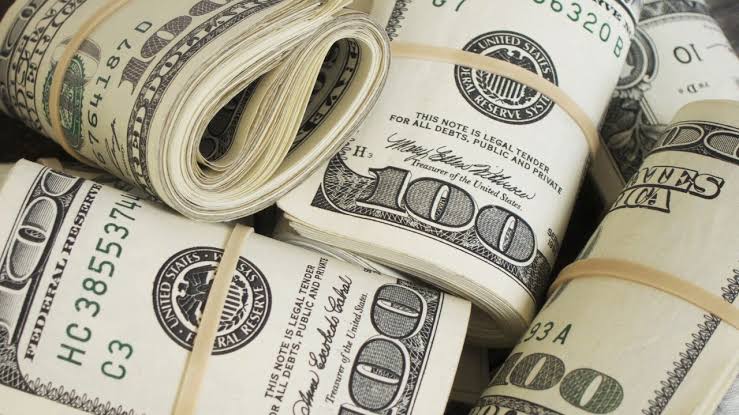
Homelessness is a problem all over the world, and while you can find it in developed nations like the UK and France, the United States has far more in contrast to other developed Western nations. As of 2018, about 0.17% of the American population was living on the streets, and while that doesn’t seem like a lot, it amounts to more than 553,000. The states with the most homeless people are California, New York, Florida, Washington, Oregon, and Texas; coincidentally, most of these states have higher amounts of population density, but they also have some of the wealthiest people in the country.
Homelessness is a serious problem, and fortunately, there are people and organizations working to help provide temporary and permanent housing to displaced Americans. The most obvious question is if the United States is the wealthiest nation in the world, why are so many people homeless? The complicated economics of the States doesn’t offer a simple answer, but there is an obvious disparity between the wealthiest people and the folks who have nothing. Because the number of Americans who are insanely wealthy remains low, the top 1% of wealthy Americans hold 40% of the total national wealth.[2]
8 The United States Has A Crumbling Infrastructure

If it took a long time for this page to load and get to the article, you may be somewhere in the United States. Despite being the country chiefly responsible for inventing what became the Internet, the US languishes behind many other nations in terms of download speeds. The United States ranks 38th out of 141 nations on the Speedtest Global Index. The country falls just below Portugal and sits on top of Spain. The main reason the US has poor Internet is due to the cost of overhauling the telecommunications infrastructure, but that’s not the only part of American infrastructure that’s lacking; the roads, bridges, dams, water, and power systems are all falling apart, and nobody wants to pay to have them fixed.
The politicians talk about fixing infrastructure all the time, but nothing has come out of it. Meanwhile, 47,000 bridges are in serious need of repair with the possibility of a catastrophic failure should a rather large pigeon fire some droppings on the wrong platform. Roads are also a serious problem, and the effect is noticeable if you drive down any major highway in the United States. The Pacific Institute for Research and Evaluation determined that 42,000 road deaths were the result of potholes and other road maintenance issues.[3]
7The US Has The Largest Prison Population In The World
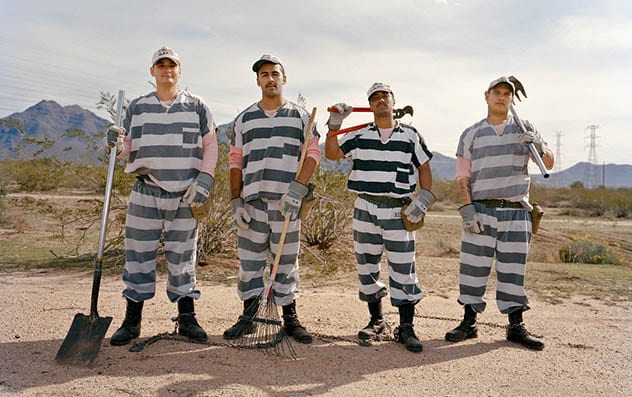
This statistic is widely known, but it’s likely most Americans aren’t aware of just how bad the penal system in the country is. The United States has more imprisoned people than any other nation on the planet. For every 100,000 citizens, 724 are in prison, and when you see that number, it may not look large, but for China, their number is only 118 out of 100K. The number becomes an even bigger problem when accounting for the total population of prisoners in the States, which is around 2.2 million, and the jail occupancy rate is at 107.6%, meaning they are overcrowded and insufficient to house what amounts to the equivalent population of Macedonia.
Overcrowding is just one of the many problems facing incarcerated Americans; another major concern revolves around the fact that more than 21% of incarcerated people haven’t been sentenced with a crime usually takes a long time. If a person can’t afford bail, they have to remain in prison until they’re sentenced, even if they are ultimately acquitted of a crime. This essentially means that because everyone is innocent until proven guilty, the United States has more than 460,000 innocent people in jail.[4]
6 The Country’s Health Care Problems Are A Nightmare
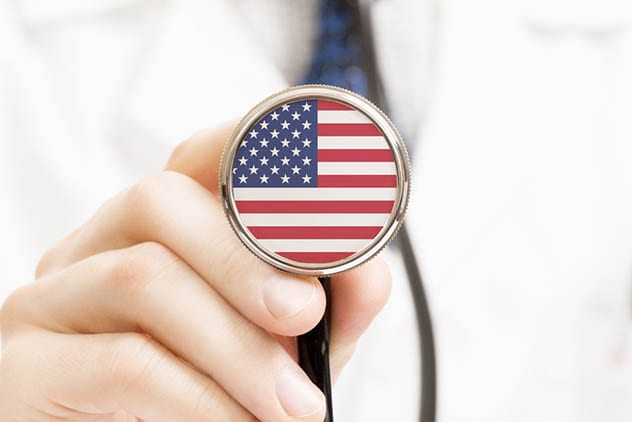
One of the biggest issues facing the United States is a health care system that has gotten so out of hand; people are being charged thousands of dollars by simply walking into an ER without receiving treatment. In terms of rankings, the United States stands at the top of the list in terms of spending on health care, and without some serious government reform across all areas of insurance, billing, prescription medical costs, and long term care, it will only get worse. The US is a country where a person can wind up in bankruptcy and lose their entire life savings by getting sick, and it happens all the time. The term “Medical Bankruptcy” has become commonplace, and 66.5% of all bankruptcies result from medical costs.
It’s gotten to point where people are choosing to skip treatment and enjoy the time they have left, rather than go into serious financial hardship, which would only hurt their families. The news is rife with examples of people going without insulin or stretching what they have, which reduces its effectiveness, often leading to serious complications and death. Prescription drug prices in the United States have driven many to illegally purchase and bring back identical drugs from Mexico and Canada, where it’s far cheaper. It’s hardly limited to drugs, as something fairly routine like an MRI costs an average of $1,119 in the States while the same procedure will run $215 in Australia.[5]
5The US Has Refused To Ratify Some Widely Accepted International Treaties
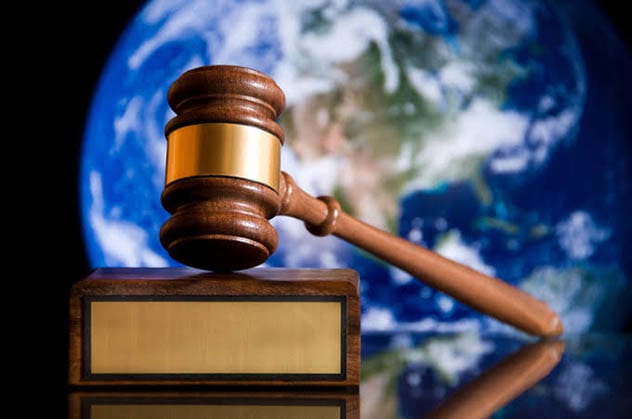
You probably think that the United States ratified the treaty that brought the Korean War to an end more than 65 years ago, but it remains unratified to this day. The truth about America and treaties is, the country rarely ratifies them, and the ones you probably thought the US was party too are rather surprising. Even when the country signs a treaty, there’s no guarantee it will abide by it. Native Americans know this all too well, but broken treaties aren’t just a domestic problem. The most recent examples of this include the Paris Climate Accord and the Intermediate-Range Nuclear Forces Treaty.
The number of treaties the States aren’t a party to is rather large, but there are some standouts. As of November 2019, the United States has refused to sign or ratify the following: The Treaty of Versailles (1919), which ended WWI, The International Labor Convention (1949), The Convention on the Elimination of All Forms of Discriminations Against Women (1979), the Convention on the Rights of the Child (1989), and the Mine-Ban Treaty (1997) just to name a few. The refusal to sign is often self-serving to the nation, but it highlights a continuous trait of refusal to participate in global politics when the US doesn’t get what it wants in a treaty.[6]
4 American Guns Kill American Kids… A Lot

Firearms are a problem in the United States, and while there are plenty of articles and discussions online about the good and bad of gun ownership, the simple fact remains that more children die in the US from firearms than anywhere else in the world. The statistics for child deaths in the United States rank guns as the second-leading cause after car crashes and above cancer. Yes, you read that correctly, but it bears repeating: cancer kills fewer American children than firearms. In 2016, 3,143 children died from gun-related deaths, and only a small percentage came from school shootings.
When it comes to gun deaths overall, the United States ranks higher than Iraq, Afghanistan, Thailand, Kenya, and many other nations. Meanwhile, the number of car-related deaths is on the decline, while gun-related violent deaths among children are racing to surpass it. The deaths may not break down as you might think. In 2016, 4% were unintended/accidental shootings, 35% were suicides, and 60% were homicides. The remaining 1% were uncategorized due to uncertainty. The saddest aspect of these statistics remains the fact that most of these kids likely wouldn’t have died were guns less prevalent in the United States.[7]
3 The Well-Being Of Children In The US Is Declining

Everyone cares about the wellbeing of children, and nobody wants to see the next generation suffer, but kids in America aren’t doing as well as you may expect. There are several factors driving the numbers indicating a problem, including literacy, health care, science & technology education, and ignorance. While many of these issues impact adults in the States as well, the threat to the younger population is substantially more disconcerting. In terms of literacy, the United States is ranked 24th. If children don’t learn to read at an early age, it will negatively impact their chances to land a good job and take care of themselves without needing assistance from the state.
Another significant problem affecting children in the United States stems from how the country treats so-called “undocumented immigrants.” Recently, the Trump administration decreed that migrants in ICE custody were to be denied flu shots, which could result in a widespread epidemic due to the population density of detention centers. Even more problematic is the country’s Family Separation Policy, which drew massive outrage leading to its suspension without resolving the problem. At present, nobody knows how many kids were separated, where their parents are, or how the nation is going to bring those families back together. In the meantime, several have died in custody, and the thousands of migrant children still in custody are suffering.[8]
2American Freedom Of The Press Isn’t As Free As Most Think
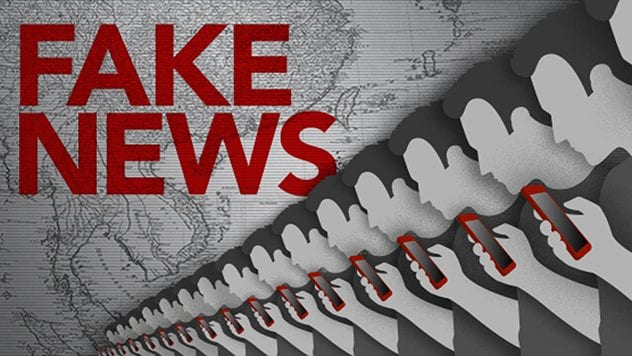
Freedom of the press is one of the core principles of American liberty, having been codified into law via the First Amendment to the United States Constitution. The rights of the people to freely report on their government, whether positively or negatively, is paramount to a free and just society, but those freedoms have been steadily declining over the years. For the third year in a row, the United States’ ranking on the World Press Freedom Index has dropped to 48th out of 180 nations. The main reason the US has declined can be summed up in only two words, “Fake news.” That mantra, which was popularized by President Trump, has chipped away at the so-called fifth pillar of American democracy, and the trend is worsening each year.
The ranking fell to the point on the scale where it describes the treatment of journalists as being “problematic.” The ranking was based on the President’s hostility towards reporters, the curtailment of White House briefings, the banning of several reporters who asked questions or reported news the President didn’t care for, and the overt harassment of the press at his reelection rallies. Further threats to the American press include bomb threats and murder plots made against CNN and other media organizations, one of which was planned by a Lieutenant in the US Coast Guard. Hatred of the media has become such a threat; several reporters were killed in an attack carried out at the Capital Gazette in Annapolis.[9]
1 Equal Rights For Women Have Yet To Fully Manifest
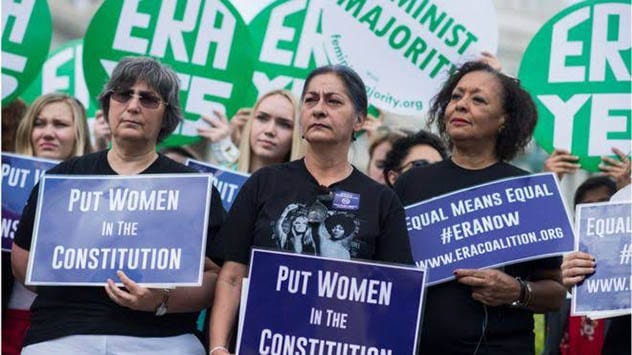
The United States has some serious problems where gender equality is concerned, and the government isn’t doing much to curtail it. The 2019 Sustainable Development Goals Gender Index covered a lack of gender equality in the following areas: “gender budgeting and public services, equal representation in powerful positions, gender pay gaps, and gender-based violence.” Currently, the US is tied with Bulgaria for 28th place, but another study conducted by the World Economic Forum placed the US at 51 out of 149 states where gender equality is concerned.
The average salary difference shows that a woman who works the same job as a man makes $0.63 for every dollar the opposite sex makes. The US has had an Equal Rights Amendment surfing around the country for full ratification since as far back as 1923, but it has thus far failed to be ratified in the necessary 38 states. To date, 37 have ratified, and despite being a hot-button issue for the majority of bipartisan Americans, there is some hope the Amendment will be ratified before the current ratification extension expires. The 2019 Election resulted in Democratic control of the Legislative and Executive branches in that state, which suggests there won’t be any partisan roadblocks if/when the Amendment is brought forth for ratification.[10]
For more lists like this one, check out 10 Outlandish Conspiracy Theories About The USA, and Top 10 American Conspiracy Theories That Are Completely Bonkers








